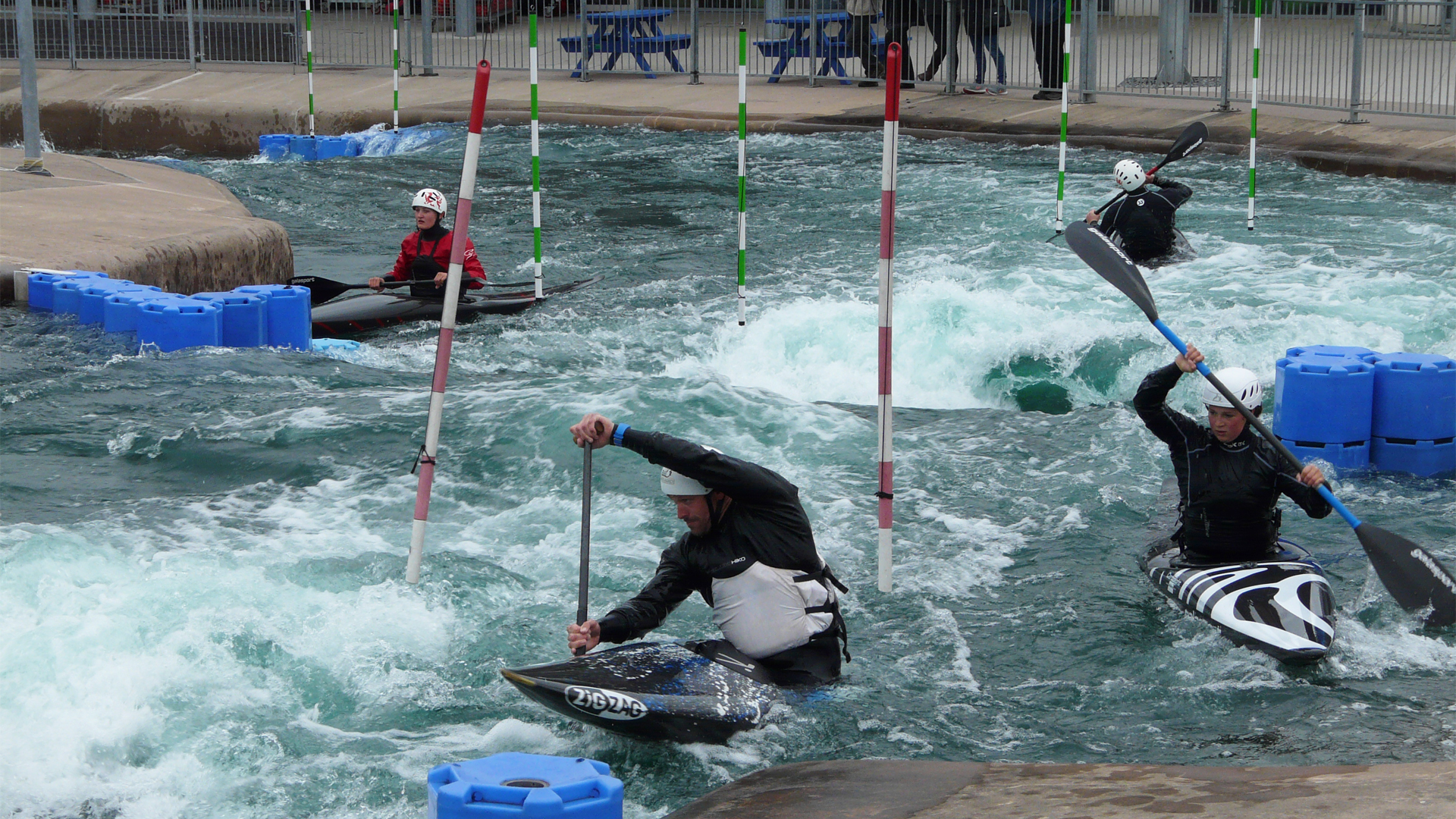These are the accompanying notes for a presentation given on the topic of Warm-Ups for Canoe Slalom paddlers.
Warm-Ups
- Why?
- When?
- What?
- How?
- Where?
- Practicalities of warm-up
- Warm-up Clever
Why we warm-up
- To improve race performance
- To improve training session efficiency
- To minimise risk of injury
- Tune in to “today’s body”
- Increase Confidence
When we warm-up
- Before a race
- Before a training session
- Before any activity
What we warm-up
- Mind
- Focus
- Deal with Distractions
- Visualisation/Rehearsal
- Setting Strategy
- Body
- Prepare body for work
- Take feedback from body
- Skills
- Refresh Skills
- Boost Confidence
How we warm-Up
- Stretching / Mobility
- Land and Boat
- Dynamic versus Static
- Continuous Paddling
- Boat Handling / Awareness
- Stroke Mobility
- Gates
- Sprints
- Mental Preparation
- Off the water
- Run/Walk
- ‘Home Gym’ Equipment
- Relaxation
Training Warm-Up – Intensity Session
- Mobility
- Light dynamic stretching/flexibility out of boat, short steady run (5 – 10 min)
- Continuous paddling
- Easy start, steadily increase pace (10 min)
- Boat handling/stroke drills
- Enders, turns, slicing, cross-bow, reverse paddling – (5 min)
- Specific Stretching within boat
- Dynamic
- Not too strenuous – (5 min)
- Short Sprints
- Mental Preparation/Visualisation throughout the process
Training Warm-Up – Endurance Session
- As per Intensity W.U. but bring heart rate gradually up to required level.
- Stay below Lactic Threshold
- Continuous paddling
- Boat handling/stroke drills
- Stroke/Boat/Body Mobility
- Specific Stretching within boat
- Aerobic Efforts
- Replace sprints with 2-3 x 3 – 4 mins efforts at Aerobic threshold
- Mental Preparation/Visualisation throughout the process
Race Warm-Up – Double W.U.
- Detailed (initial)Warm-up
- Followed by time for:
- Mental Preparation
- Strategy
- Relax
- Quiet Time
- Allow 45-60 min rest before race run
- Try to maintain moderate activity so warm-up effect not lost
- Pre-Start Warm-up (immediately before race run)
- Sprints, Stroke Drills, Gate Work, Mental Prep.
- Short — 10 – 15 mins
- For Single Warm-up days – use abbreviated form of Detailed W.U.
Example Race Warm-Up (Detailed Warm-Up for a Double Warm-Up day)
- Mobility
- Light dynamic stretching/flexibility out of boat (5 – 10 min) – short steady run
- Aerobic Continuous paddling
- Easy start, steadily increase pace (10 min)
- Specific Stretching within boat
- Not too strenuous – (5 min)
- Boat handling/stroke drills
- Enders, turns, slicing, cross-bow, reverse paddling – (5 min)
- Gate Technique Warm-up
- Short courses (20-30 sec), race pace, cover all moves required – don’t go lactic (10 mins)
- Sprints (ATP-CP)
- 5 x 10-12 sec — 5 x rest (5 – 7 mins)
- ‘Full run’
- Simulation run – flat-water, imaginary gates (enhanced visualisation), close to race pace (below race pace for Single W.U. day)
- Anaerobic Sprints/Gates
- 2 – 3 x 30 – 45 sec, max pace with 3 – 4 min between (on double warm-ups only, Note: differing opinions on pros/cons of this stage )
- Moderate paddling / ‘Specifics’
- Whatever you feel needs more time/detail
- Mental preparation/Tune in
Warm-Up Practicalities
- Not always possible to do exactly what you want –
- Lack of facilities
- Different venue
- Interaction with others – working as a team
- Aim for the optimum but be prepared to accept less
- Be flexible in your approach
- Have an ideal but be prepared to go with less/different
- Train your routine and your ‘flexibility’
- Training Session Warm-up shorter than race day W.U.
Not a Warm-Up!
- Floating around the eddy chatting to your buddies
- Paddling around aimlessly and doing a few dips
- Etc…
Your Warm-Up
- Make it structured
- Learn a routine and use it
- Train your Warm-up
- Experiment/Trial and Error
- Improve your Warm-up
- Enjoy your Warm-up
- Use Confidence Boosters
- Be prepared to be flexible
Warm-Up Clever
- High Intensity Sessions require a more detailed Warm-up
- Technical Sessions require a more detailed Warm-up
- Injury Recovery requires a more detailed Warm-up
- The fitter you are, the longer it takes
- The colder the weather, the longer it takes (use pogies!)
- The earlier in the day, the longer it takes
- The older you are, the longer it takes
- Stick to a routine – but be adaptable
by John Willacy
